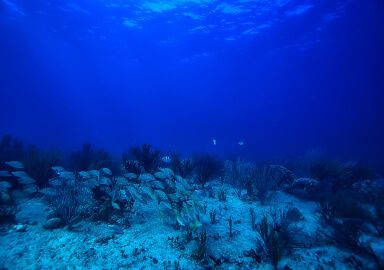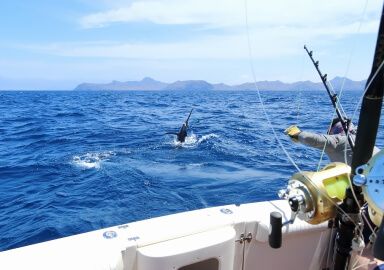Queen Snapper
The queen snapper, also called the night or brim snapper, is a medium sized, “typical” snapper, popular with some enthusiastic offshore anglers.
View 6 listings
6
listings
–
price starting from
4
countries
Where and When?
Although they are found along an extensive strip from opposite North Carolina, in the north, southwards to offshore of Sao Paulo in Brazil, much of the recreational angling is carried on from the western seaboard of the USA. Prime launching areas are from Florida, the Gulf of Mexico, round the Caribbean Sea and out to Bermuda and surrounding islands. They are an important target species for commercial fishing in the southern areas where many stocks have been reduced. In the north, however, better management practices often result in improved sport fishing.
Queen snapper has been described as a “bathydemersal”, which means “deep-water and bottom loving” fish and it is principally found at depths of 100-450 m (330-1480 ft.). While juveniles often swim in the water column, adults do tend to be nearer the bottom, usually over hard structure, particularly rocks with pinnacles. Being a really deep-water species, barotrauma, where fish brought up from considerable depths die when their swim bladder expands rapidly and extrudes through the mouth, is a serious challenge and few fish can be returned alive after capture.
About Queen Snapper
The queen snapper, Etelis oculalatus, is a fusiform (torpedo shaped), slender fish that has large, yellow eyes with bright red irises and a short snout. They are red to pink down the back and this pales downwards to become lighter on the belly. The jaws have several rows of small, sharp, conical teeth with the outermost row having larger teeth and one or two pairs of fierce canine teeth. The tail fin is deeply forked and the pectoral fins are particularly long and pointed.
As juveniles, they feed mostly on squid and small fish in the water column while, as adults, they eat mostly fish. The maximum size reported is 100 cm (39 in.) and 5.3 kg (11.7 lbs.) but a more common size to catch is about 67 cm (26 in.). Queen snapper are an offshore species not found in shallow water and they spawn throughout the year, although, in spring, they are less reproductively active. They often form dense shoals, but these can be difficult to find due to the great water depth.
How to Catch?
Almost all recreational fishing is carried out from shore-based boats and there are many excellent operators, charters and guides - particularly along the Florida and Gulf of Mexico coast, as well as many Caribbean islands. Medium spinning tackle is most suitable as fishing is usually carried out at considerable depths. Sound equipment in good condition is essential as you’re likely to find yourself in considerable current where the reel, rod and line are really put to the test. Queen snapper are also said to be among the most difficult deep-water fish to successfully hook and, losing a good specimen through lack of preparation, would be very unfortunate. While bait can be used, most anglers prefer artificial rigs, including slow pitch and streamlined jigs. There are three main challenges to overcome with catching queen snappers, firstly - to find the fish, secondly - to get the lure down to them and finally - to entice them to bite. They are, however, beautiful fish and can give a really good fight and finding, hooking, playing and landing a good queen snapper is no mean feat!
Listing Types
Similar Species
 Black Snapper
3 offers
Black Snapper
3 offers
 Blackfin Snapper
2 offers
Blackfin Snapper
2 offers
 Cubera Snapper
30 offers
Cubera Snapper
30 offers
 Gray Snapper
5 offers
Gray Snapper
5 offers
 Lane Snapper
14 offers
Lane Snapper
14 offers
 Mangrove Snapper
42 offers
Mangrove Snapper
42 offers
 Mohogany Snapper
1 offer
Mohogany Snapper
1 offer
 Mullet Snapper
6 offers
Mullet Snapper
6 offers
 Mutton Snapper
22 offers
Mutton Snapper
22 offers
 Pink Snapper
2 offers
Pink Snapper
2 offers
 Red Emperor Snapper
7 offers
Red Emperor Snapper
7 offers
 Red Snapper
99 offers
Red Snapper
99 offers
 Short-Tail Red Snapper
1 offer
Short-Tail Red Snapper
1 offer
 Silk Snapper
3 offers
Silk Snapper
3 offers
 Snapper
275 offers
Snapper
275 offers
 Vermilion Snapper
13 offers
Vermilion Snapper
13 offers
 Yellowtail Snapper
24 offers
Yellowtail Snapper
24 offers







